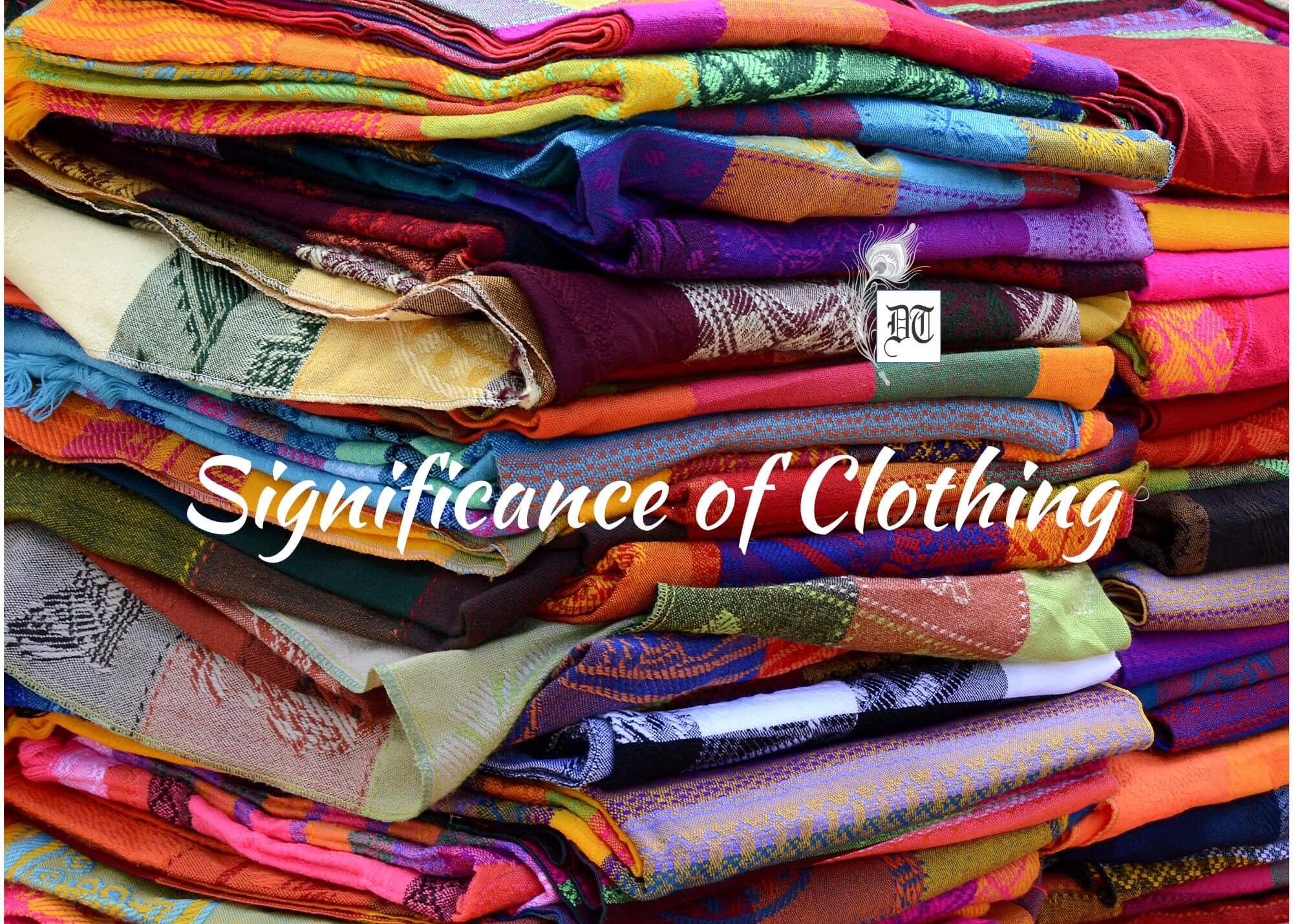In today’s India, there are 6.5 million people involved in the production of handloom saris. Although the structure of saris is mostly the same, Indian woman have much room for personal and creative expression in their dress. The sari exists in countless varieties of draping styles, patterns, colours, and weaves. Shameena tells us about this unstitched cloth that is an intrinsic part of Indian culture. Here’s the first part of the two-part story, in the weekly column, exclusively in Different Truths.
Far and wide, the sari or saree has been a well-known symbol of the Indian female for 5000 years. In today’s India, there are 6.5 million people involved in the production of handloom saris. Although the structure of saris is mostly the same, Indian woman have much room for personal and creative expression in their dress. The sari exists in countless varieties of draping styles, patterns, colours, and weaves.
The sari, sometimes spelled saree, is a draped dress, created from a single piece of fabric five to nine yards long, which is wrapped around a woman’s body in a variety of ways. The resulting garment can be practical working attire or an elegant ceremonial gown, depending on the type of fabric used and the style of draping. A daily garment worn by approximately 75 percent of the female population of India during the twenty-first century, the sari is one of the oldest known items of clothing that is still in use.
Origin of Sari
The word sari described in Sanskrit शाटी śāṭī which means ‘strip of cloth’. The word ‘Sattika’ is mentioned as describing women’s attire in ancient India in Sanskrit literature and Buddhist literature called Jatakas. This could be equivalent to modern day ‘Sari’.
The sari originated within the Hindu culture. Hindus believe that stitched clothing is impure. Hindus also believe that the belly button is very important and is a source of life and creativity. This is why the Sari does not cover the midriff. Another reason 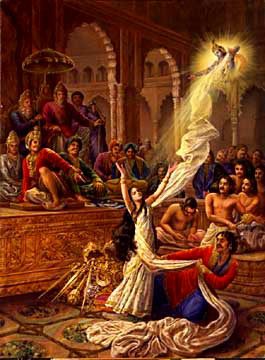 for the bare stomach is the Ancient Indian ideals of beauty. They value, like many other cultures, the juxtaposition of a small waist with larger hips and bust line. The Sari exposes the waist but also adds width to the hips and bust, emphasising and even exaggerating the female figure. This being said, the sari still maintains a woman’s modesty, as she is covered from head to toe with fabric, and it is only a small portion of her waist exposed.
for the bare stomach is the Ancient Indian ideals of beauty. They value, like many other cultures, the juxtaposition of a small waist with larger hips and bust line. The Sari exposes the waist but also adds width to the hips and bust, emphasising and even exaggerating the female figure. This being said, the sari still maintains a woman’s modesty, as she is covered from head to toe with fabric, and it is only a small portion of her waist exposed.
India’s recorded history of clothing goes back to the 5th millennium BC in the Indus Valley civilisation where cotton was spun, woven and dyed. The grand epic Mahabharata, composed by about 400 BC, tells of the god Krishna staving off Draupadi’s disrobing by bestowing an unending sari upon her. Most of the present knowledge of ancient Indian clothing comes from rock sculptures and paintings in cave monuments such as Ellora. These images show dancers and goddesses wearing what appears to be a dhoti wrap, a predecessor to the modern sari. There are many Indian myths and legends involving saris. Most come from ancient manuscripts such as the Vedic Scripts, Mahabharata, Silappadhikaram, Kadambari and Natya Shastra. Scholars commonly believe that the earliest texts recording saris are 5000 years old.
Types of Sari Draping
A sari is a strip of unstitched cloth, ranging from four to nine meters in length that is draped over the body in various styles. These include Sambalpuri Saree from East, Mysore silk and Ilkal of Karnataka and, Kanchipuram of Tamil Nadu from South, Paithani from West and Banarasi from North among others.
The most common style is for the sari to be wrapped around the waist, with one end then draped over the shoulder baring the midriff. The sari is usually worn over a petticoat. Blouse may be ‘backless’ or of a halter neck style. These are usually dressier with a lot of embellishments such as mirrors or embroidery and may be worn on special occasions. Women in the armed forces, when wearing a sari uniform, don a half-sleeve shirt tucked in at the waist. Teenage girls wear half-sarees, a three-piece set consisting of a lehenga, a choli and a stole wrapped around it like a saree. Women usually wear full sarees.
Sambalpuri Sari
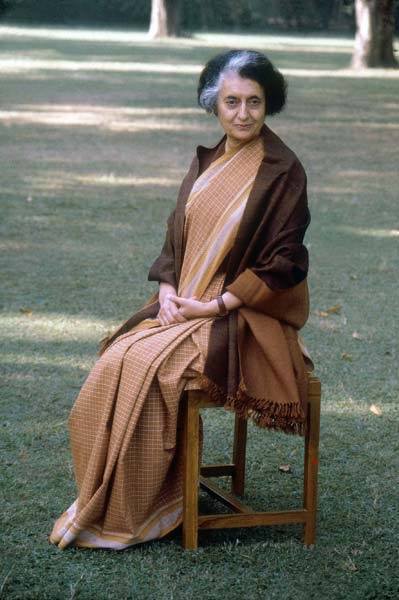 A traditional handwoven Ikat or sari or saree (locally called sadhi) wherein the warp and the weft are tie-dyed before weaving. It is produced in the Bargarh, Sonepur, Sambalpur, Balangir district, Boudh district of Odisha.
A traditional handwoven Ikat or sari or saree (locally called sadhi) wherein the warp and the weft are tie-dyed before weaving. It is produced in the Bargarh, Sonepur, Sambalpur, Balangir district, Boudh district of Odisha.
Sambalpuri saris are known for their incorporation of traditional motifs like shankha (shell), chakra (wheel), phula (flower), all of which have deep symbolism, but the highpoint of these saris is the traditional craftsmanship of the ‘Bandhakala’, the tie-dye art reflected in their intricate weaves, also known as Sambalpuri Ikkat. In this technique, the threads are first tie-dyed and later woven into a fabric, with the entire process taking many weeks.
These saris first became popular outside the state when the late Prime Minister Indira Gandhi started wearing them. In the 1980s and 1990s, they became popular across India. To provide protection to the weavers practicing this art, the handloom silk sarees manufactured in Sambalpur and Berhampur (Berhampur Pattu) in Odisha were included in the government of India’s Geographical Indications (GI) registry.
Kanchipuram of Tamil Nadu
Kanchipuram also spelled Conjeevaram, Kanjeevarum, Kanjiwaram, Kanjivaram, is traditionally woven silk from the village called Kanchipuram in Tamil Nadu, India. For years now, Kanchipuram silk saris have dominated the world of South Indian sarees. Synonymous with the saris of South India, these are the mark of culture for every south Indian wedding, ceremony or occasion. The shine and durability of the fabric have made these saris popular attire among women across the globe. The rich quality combined with an amazing finish make them last longer.
A famous king of the Chola dynasty ruled Kanchipuram between the years 985 and 1014, who took an initiative of the silk trade. It was during the reign of Krishna-Deva Raya, when the famous weaving communities of Andhra Pradesh, the Devangas, and Saligars, migrated to Kanchipuram. Thus, occurred the historical migration of the entire silk industry in the 15th century, to this city.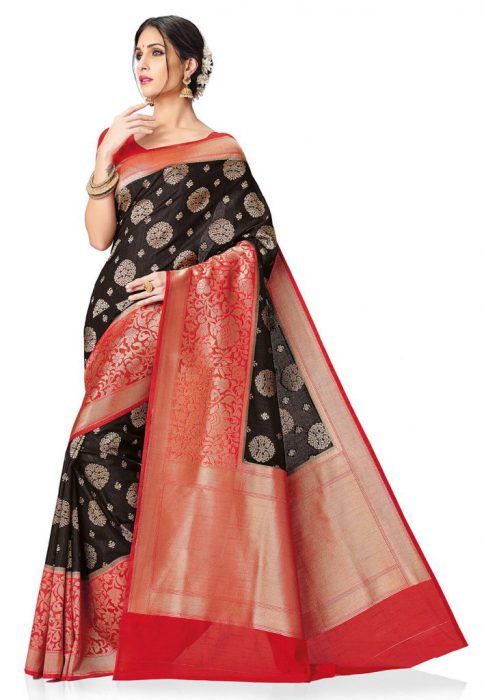
The two weaving communities were exclusively acknowledged for their skills at weaving silk. The weaving industry was temporarily halted during the French invasion in the 17th century. It rejuvenated and revamped its style in the 18th century. Today, it ranks among the most popular silks in the world. Very few stand out in the competition against Kanchipuram silks. The British translated the Kanchipuram silks to Conjeevaram silks, also known as Kanjeevarum silks.
This fabric is an inherent part of several traditional and religious ceremonies. Kanchipuram silks have created the main occupation for several in the city of Kanchipuram. The silk bears the images of all the scriptures embossed on the walls of the temples of the Kanchipuram village.
Over decades, Kanchipuram silk has been evolving in terms of design and pattern but hasn’t lost its charm. Initially sold across the world by only merchants, today the real weavers have woken up to their own cooperative societies to sell their woven Kanchipuram silk.
We will talk about other popular verities of saris next week, Mysore Silk, Irkal of Karnataka, Paithani and Banarasi saris.
(To be continued)
©Shameena Abdurahiman
Photos sourced from the Internet, from the author
#Saree #IndianAtire #NineYards #WrapingOfSaree #TypesOfSarees #WearingASaree #KanchipuramSaree #SambalpuriSaree #Mahabharata #DraupadisSaree #HistoryOfSaree #UnderstandingIndianClothing #FashionFunda #DifferentTruths

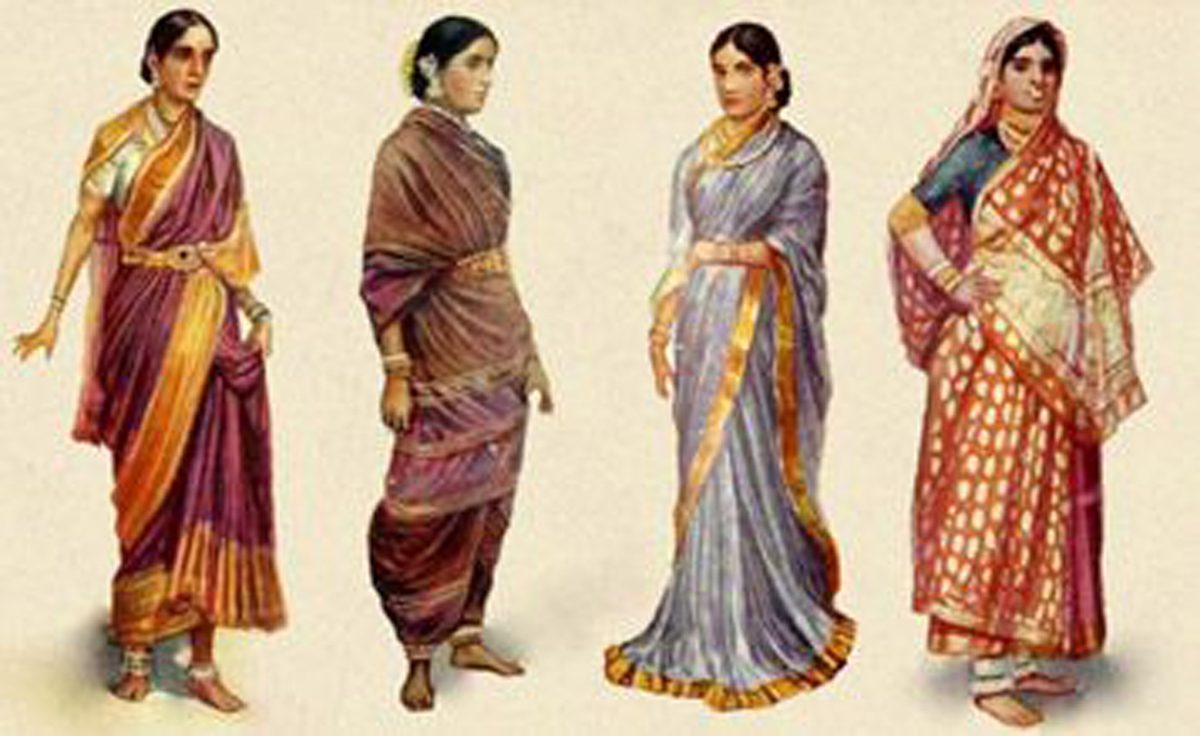
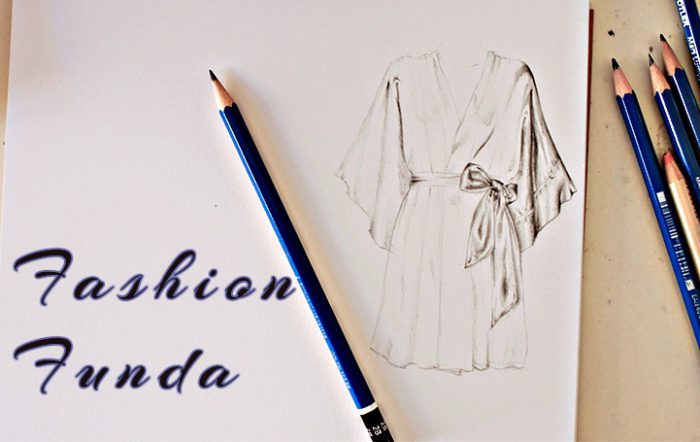





 By
By